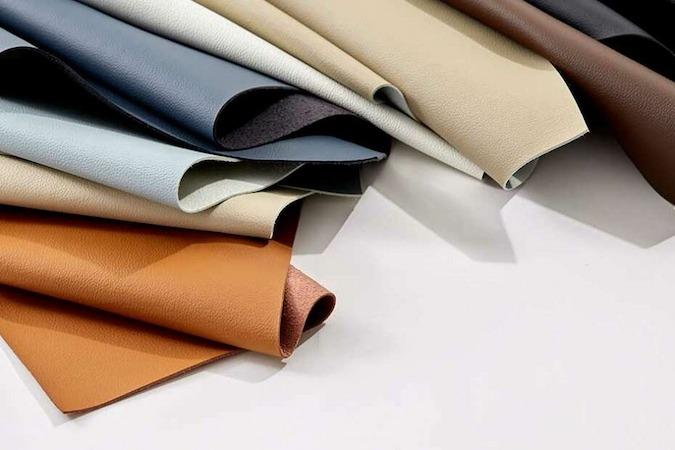
Top 15 Largest Leather Producing Countries in the World 2024
Top 15 Largest Leather Producing Countries in the World 2024 – The international leather industry is a vital economic sector, employing millions globally. In 2020, the export value of leather goods exceeded $297 billion. Developing countries dominate leather exports due to competitive labor and production costs. This article analyzes the top 15 leather exporting nations, their key products, and advantages supporting their success.
The Top 15 Largest Leather Producing Countries in the World 2024 Are:
1. China: Leader in Leather Exports
With 25% of global leather exports, China is the undisputed leader in the industry. The country exported over $74 billion in leather goods in 2020. China is a major producer of footwear, handbags, wallets, belts, upholstery, garments and diverse leather products. Its enormous manufacturing capacity is serviced by abundant skilled labor, robust supply chains and world-class infrastructure. China sources leather both domestically and through imports from developing countries. Cost efficiencies coupled with strong technical and design capabilities have enabled China to supply global fashion and leather brands.Top 15 Largest Leather Producing Countries in the World 2023
👉 Relocate to Canada Today!
Live, Study and Work in Canada. No Payment is Required! Hurry Now click here to Apply >> Immigrate to CanadaRead Also: Top 15 Highest Mountains in Nigeria
2. Brazil: Major Meat and Leather Producer
Brazil accounts for 9.5% of the world’s leather exports. In 2020, the country exported $28.3 billion in leather products, primarily bovine hides and shoes. As one of the largest meat producers globally, Brazil’s huge cattle population supports its leather industry with abundant raw material. Brazilian tanneries are technologically advanced and known for environmentally sustainable production. The country also has a competitive footwear components industry providing shoes at various price points for export markets. Brazil is poised for continued growth in leather exports.Informationguidenigeria
3. Russia: Strength in Fur and Leather
Russia has a long history of leather craftsmanship and exports around $21 billion in leather goods. The country has capabilities across finished leather, footwear and fur. Upholstery leather is also an important export. Russia sources most of its cattle hides domestically while importing small ruminant skins. The technical training institutes and design schools supply skilled manpower. Russia is internationally acclaimed for high-end fashion products blending leather and fur.JAMB Result
4. India: Export Growth Through Value Addition
India accounts for 6.4% of global leather exports, valued at $19 billion in 2020. The country is a major producer of bovine and small ruminant skins. India exports diverse finished leather, footwear, garments, gloves and leather accessories. Cheap skilled labor helps offset other production costs. The leather clusters of Tamil Nadu and Uttar Pradesh have fueled export growth through integrated manufacturing. Compliance with environmental norms and quality standards has boosted India’s competitiveness. The country aims to increase value addition to drive export growth.
Read Also: Top 15 Countries with Low Inflation Rates
5. Italy: Leader in Design and Luxury
Italy accounts for 5.5% of leather exports, valued at $16.3 billion. The country is renowned for high-end leather goods including designer shoes, bags, jackets and upholstery. Italian companies like Armani, Prada and Ferragamo are leaders in global luxury fashion. Italy imports raw hides for its leather industry while focusing on design-intensive finished products. Robust R&D, an expert workforce of artisans and craftsmen, and strength across the value chain support the success of Italian leather companies. Italy excels in translating leather into highly coveted luxury merchandise.NYSC Portal
6. Argentina: Major Raw Hides Supplier
Argentina makes up 4.5% of world leather exports with sales of $13.4 billion. As a top beef producer, the country exports vast quantities of bovine hides and wet blues. Argentine hides are prized globally for their quality. The country also fares well in the export of leather footwear and upholstery. However, Argentina is yet to maximize its potential for export of finished leather products. With innovations in technical training and manufacturing, Argentina can move up the leather value chain beyond raw hide exports.Romantic Love Messages
7. South Korea: Technology and Quality Focus
South Korea accounts for 4% of global leather sales, exporting goods worth $12 billion. The country is not endowed with plentiful leather resources but has deliberately developed its leather industry. South Korea sources hides globally and uses advanced technology to produce finished leather and diverse products. The exports consist of leather footwear, garments, bags, gloves and automobile upholstery. With a focus on futuristic design and consistent quality, South Korea supplies leading international brands.
👉 Relocate to Canada Today!
Live, Study and Work in Canada. No Payment is Required! Hurry Now click here to Apply >> Immigrate to Canada8. Turkey: Leader in Skins and Leather
Turkey accounts for 3.5% of world exports, with leather sales of $10.4 billion in 2020. The country enjoys proximity to the vast sheep population of Central Asia and exports sheep and goat skins in addition to bovine hides. Turkey’s leather exports span a range of products from upholstery to garments and shoes. The country has a long tradition of leathercraft that translates into innovative products. However, exports consist more of intermediate goods and Turkey aims to move up the value chain.
Read Also: Top 15 Natural Ways to Repel Mosquitoes
9. Vietnam: Emerging Manufacturing Hub
Vietnam makes up around 3% of global exports, exporting $8.9 billion of leather products. The country has deliberately grown its leather industry, with footwear exports exceeding $20 billion in 2020. Vietnam sources leather from neighboring countries and has become a manufacturing hub for major brands thanks to cheap skilled labor. With large investments in tanneries and production facilities, Vietnam is poised to advance in the global leather export rankings.Good morning My Love Message
10. Pakistan: Traditional Skills and Innovation
Pakistan accounts for 2.5% of world leather exports. The country exported leather products worth $7.5 billion in 2020. Pakistan has a vibrant cottage leather industry centered in the Punjab region. Traditional skills in leather crafting are complemented by contemporary production units. Pakistan exports diverse products including leather garments, gloves, bags, shoes and soccer balls. Compliance with global standards has enhanced quality and boosted competitiveness. Pakistan’s leather exports are set to grow through further innovation.
11. Mexico: Regional Manufacturing Powerhouse
Mexico is the 2nd largest leather exporter in the Americas after Brazil, accounting for 2% of global trade. The country exported leather goods worth $6 billion in 2020. Mexico benefits from proximity to major livestock populations in South America to source cattle hides. The country has a robust chemicals industry supporting leather production as well as large shoe manufacturing clusters. Mexico supplies majority of its leather products to the US market. With strategic investments, Mexico aims to enhance its global leather industry footprint.
12. Poland: Blending Tradition and Technology
Poland accounts for 1.5% of world leather exports, with $4.5 billion in overseas sales. The country has a long tradition of tanning, producing a diverse range of leathers. Poland also manufactures and exports shoes, garments, upholstery and accessories. Linkages with European design schools have helped polish product development capabilities. Compliance with stringent EU regulations has improved environmental sustainability. Poland is strengthening its leather industry through strategic development programs.
Read Also: Top 15 Most Populated Country in Europe
13. United States: Leader in Bovine Hides
As the world’s largest beef producer, the US accounts for 1.5% of leather exports totaling $4.4 billion. The country is a major supplier of bovine hides and wet blues to the global industry. However, lower cost imports have eroded the US manufacturing base in footwear and leather goods. The country still has capabilities in producing high-end leather for aviation, luxury cars and designer brands. Niche producers craft premium leather goods for the domestic market.
14. Indonesia: Leveraging Local Skills
Indonesia is among the top five raw hide exporters, and accounts for 1% of global leather exports. The country sold $3 billion in leather goods overseas in 2020. Indonesia possesses a vibrant local leather industry centered on the island of Java. Small firms specialize in handmade wallets, bags, pouches and decorative items with skills passed down through generations. Indonesia aims to upgrade technologies and build an export-oriented industry while retaining traditional craftsmanship.
15. France: Luxury and Fashion Focus
France accounts for 1% of world leather exports, with sales of $3 billion annually. The country is not a leading leather producer, but excels in high-end products. French companies use the finest leathers to create luxury bags, shoes, garments and accessories. Brands like Hermes, Louis Vuitton and Chanel epitomize French excellence in leathercraft and global fashion. The synergies between leather and apparel support product innovation and underpin France’s niche leadership.
Read Also: 15 Best Contacts and Eyeglasses in Nigeria
Conclusion
The global leather trade involves developing economies leveraging raw materials and labor cost advantages along with advanced nations focusing on design, technology and branding. The top exporting countries profiled above illustrate diverse strategic approaches for competitiveness. As the industry evolves, leadership will depend on sustainable production, supply chain integration and understanding customer preferences across markets.
Check JAMB Result
Check and Confirm: How much is Dollar to Naira





